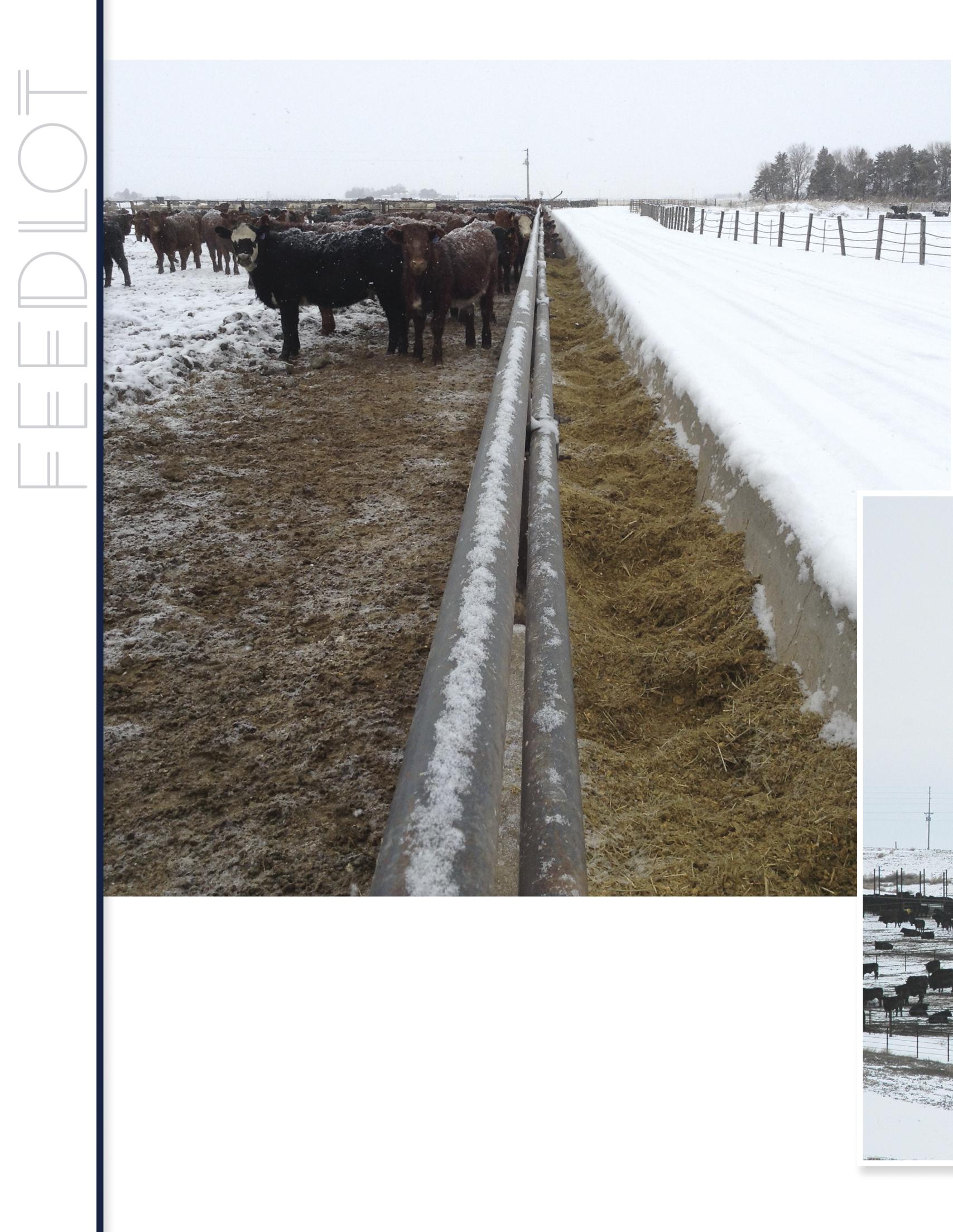
3 minute read
LICE CONTROL IN CATTLE
By Dan Thomson, PhD, DVM, Production Animal Consultation, Iowa State University
Lice continue to cause issues in beef cattle production. Most lice problems in cattle occur in the winter months due to the decrease in sunlight during the days and the longer hair coat in cattle. The longer hair coat also makes it more difficult for cattle to groom themselves, contributing to more lice issues. Lice do not live very long away from the host animal. Therefore, we begin using lice products starting in the fall when day length gets shorter and cattle begin growing their winter co ats. We st op lice product application in the spring as our days get longer and warmer, causing cattle to shed hair co ats.
The life cycle of lice is 20 to 30 days in the dense winter hair coat of cattle. The entire life cycle occurs on cattle which makes lice easier to kill than many other vector species. The adult female lice attach nits (eggs) to the cattle hair. A week or two later, the nits hatch lice nymphs. The nymphs go through molting processes until they advance to the adult stage around two weeks after hatching.
There are two main types of lice: chewing lice and sucking lice. Of the five lice species in North America, four of the species are sucking lice and one species is a chewing type of lice. It is important to know which type of lice you have infesting cattle when treating. Injectable endectocide products are effective at killing sucking lice but will not kill chewing lice. Topical or pour-on endectocide products are effective in killing both biting and chewing lice.
Cattle infested with lice will begin rubbing or scratching on fences or posts. As this behavior continues, some cattle will begin to lose large patches of hair. Studies have shown that rubbing on fences can permanently damage the leather produced by liceinfested feeder cattle. Lice infestation is uncomfortable to animals, creating stress and increased activity to relieve symptoms. Heavy infestations can lead to poor performance in feedlot cattle. Stress not only leads to
Table 1: Topical lice control products for beef cattle
aProducts requiring more than one treatment, the second dose should be administered 2 weeks after the first dose. bRain fast time is the time needed for product to be on the animal before rain occurs.
cDosage for cattle over 800 lbs.
dDosage for cattle over 600 lbs.
decreased intakes but can decrease the immune response of cattle. Lastly, lice are vectors that have been found to spread blood-borne diseases within and between cattle herds.
One should work with a veterinarian to determine the type of lice control that is right for your herd. Things to consider include rain fastness of product, withdrawal days of product, number of times a product must be administered, and cost. Remember that injectable products do not kill chewing lice. Therefore, the tables included only represent pour-on or topical products.
There are basically two types of pour-on products used to control lice in cattle: systemic or topical products. Systemic products are absorbed into the skin or licked off the animal during grooming which then presents back to the skin to control lice. These would be the avermectin pour-on products. The second type, pyrethroids or permethrin pour-on products, are not absorbed and to not have lateral transport in the skin system. This is why proper administration of pour-on products is very important to the success of treatment or control of lice in cattle. When pouring the product on the cattle, you should administer 1/3 of the product at the withers and then administer the remaining 2/3 of the dose from the withers to the tail head. Lastly, some topical pour-on products require two doses to be effective.
Controlling lice is an important component to your feedlot and cow herd health program. The further north your operation is located, the earlier in the year lice control begins and the longer the lice season continues. Products differ in mechanism of action, number of applications, and duration of activity. Work with your veterinarian to develop the right program for your cattle herd.
Table 2: Systemic pour-on lice control products for beef cattle
aRain fast time is the time needed for product to be on the animal before rain occurs.
Dr. Dan U. Thomson is a third-generation bovine veterinarian from Clearfield, IA. Thomson is an owner/partner in PAC veterinary and research services which oversees the veterinary care, health and well-being for 20% of the U.S. cattle of feed. He is recognized internationally as a leader in animal welfare, beef cattle production, and cattle health management. Dr. Thomson’s research program has been granted over $35.3 million with $16.0 million of those funds coming with him as the primary investigator. Thomson is the founder and host of Doc Talk, a nationally aired beef cattle health veterinary show on television. He has hosted nearly 500 episodes of the show in its ninth season that reaches over 45 million homes world-wide. Dr. Dan is married to his wife Cindy. They have four daughters: Kelly, Katelyn, Tory, and Sarah. They enjoy basketball, fi shing in southwest Iowa, and traveling together.











